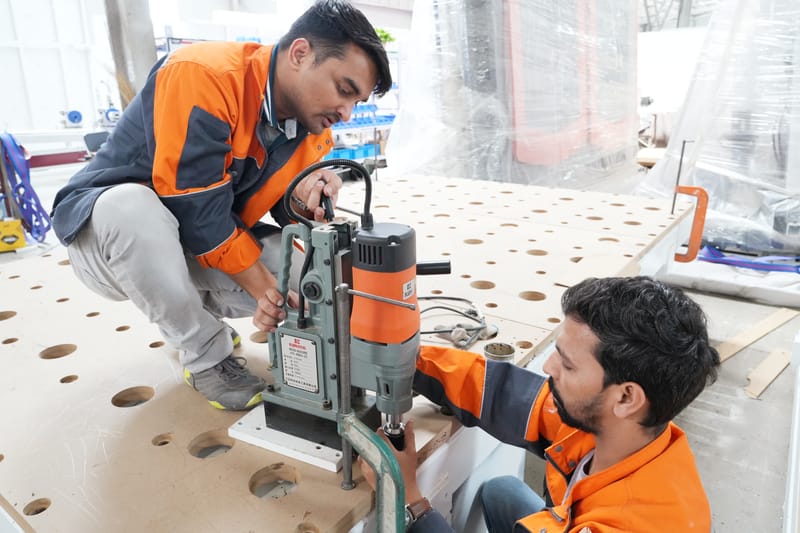After-sales Service Method

1. Service method
1. Telephone support: By telephone or fax, professional and technical personnel will be arranged to locate the equipment fault within the specified time, and come up with a solution, and finally eliminate the fault.
2. On-site support: For faults that cannot be diagnosed by telephone, technical engineers will be arranged to analyze the reasons, formulate plans, and troubleshoot faults.
2. Service Commitment
- Timely service response;
- Effectively solve the problem;
- Service process specification;
- Comprehensive service content.
Provide a 1-year warranty period for the equipment provided by our company.
If there is a quality problem during this period, our company will send a special engineer to respond within 1 hour, arrive at the scene within 72 hours, and solve the problem within 24 hours. If the problem cannot be solved within 24 hours, the corresponding product will be replaced on the same day
3. Responsibilities
3.1 This system is written or revised by engineering and technical personnel, and approved by the manager in charge.
3.2 This system is implemented by the equipment management department in collaboration with post operators and equipment maintenance personnel.
3.3 This system is supervised and inspected by the equipment management department.
4. Content and requirements
4.1 According to different situations such as equipment failures and accidents, equipment maintenance is divided into three categories: regular maintenance, emergency maintenance, and equipment renewal and system transformation.
4.2 Regular maintenance
① Adhere to the principle of equipment maintenance based on prevention, carry out regular maintenance, and formulate corresponding major, medium, and minor repair plans.
② The relevant personnel must carefully implement the maintenance plan to prolong the normal service life of the equipment as much as possible and reduce the chance of emergency maintenance.
③ The equipment management department is responsible for establishing equipment maintenance files. The maintenance records and replacement parts records must be complete and true, to analyze the cause of the failure and determine the responsibility.
④ After the equipment is regularly maintained, the production department and the equipment department will jointly organize the acceptance. After the acceptance is passed, the equipment maintenance acceptance form will be jointly filled out and signed by the responsible persons of both parties before it can be put into production.
⑤ When regular maintenance of the normal system is carried out, if the production and use are affected, the production department must be notified three days in advance to be fully prepared.
4.3. Emergency maintenance
When emergency maintenance must be carried out, the equipment management department should be notified immediately, and the equipment management department will arrange personnel to deal with it according to the actual situation. Replacement ensures that the device is functioning properly.
5. After-sales service content
5.1 The product warranty period is: product equipment is guaranteed for 1 year, free warranty during the warranty period, and lifetime maintenance. The warranty period is calculated on the day when the product is installed and passed the acceptance inspection. After the expiration of the warranty period, a reasonable fee will be charged according to the situation.
5.2 After each service is completed, a formal after-sales service report will be submitted to the customer.
5.3 Installation and debugging: The installation and debugging of the goods are provided free of charge. According to the predetermined plan and the actual needs of the user, the installation plan is formulated and installed, and deb
5.4 Information: After the installation is completed, the necessary documents and all the information about this project are provided free of charge.
5.5 For product repair, maintenance, and simple handling methods in the event of failure, our company will conduct technical training on the user's site;
5.6 Our company guarantees the inherent quality of the products we sell (except for product damage caused by human, environmental, and force majeure factors);
5.7 Guarantee the supply of spare parts, consumables, and maintenance services;
5.8 Set up a special engineer in the local area and set up a special maintenance point. Two maintenance technicians, Mohit and Vikram, have been trained for the maintenance point.
5.9 If there are maintenance outlets in the local area, it is guaranteed that the maintenance will respond within 12 hours,
5.10 After the warranty period, we can provide users with free upgrade plans and technical advice.


